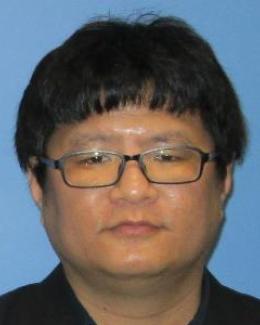
Bio
Dr. Min-Tsung Kao is a STS Target Systems Engineering Analyst in the Neutron Production Systems group at Oak Ridge National Laboratory (ORNL). He received his BS (2007) and MS (2009) degrees from the Department of Engineering and System Science from the National Tsing Hua University (NTHU), Hsinchu, Taiwan. His master thesis investigated the heat transfer enhancement and deterioration characteristics in a supercritical water channel. He then participated a training program at Westinghouse Electric Company LLC, PA, United States and conducted CFD analysis for Westinghouse's AP1000 nuclear power plant, which is a two-loop pressurized water reactor (PWR). He was then employed as a research assistant at the Department of Engineering and System Science, NTHU, Taiwan for two years. He received his PhD (2020) degree from the University of Illinois at Urbana-Champaign from the Department of Nuclear, Plasma, and Radiological Engineering. His dissertation developed a Lattice Boltzmann/SN framework for coupled heat transfer and neutron transport problems. During his PhD, he was an Advanced Short-Term Research Opportunity (ASTRO) program participant in the Advanced Reactor Engineering Group at ORNL. At ORNL, he works on developing flow and heat transfer simulation models using Computational Fluid Dynamics to support design and safety analysis efforts for the ongoing Second Target Station (STS) project at the Laboratory. In addition, he supports high-performance computing modeling and simulation activities for cooperative research and development projects with industry partners.
Education
• PhD, Department of Nuclear, Plasma and Radiological Engineering, University of Illinois, Urbana-Champaign (2012-20)
• MS, Department of Engineering and System Science, National Tsing Hua University, Hsinchu, Taiwan (2007-09)
• BS, Department of Engineering and System Science, National Tsing Hua University, Hsinchu, Taiwan (2003-07)
Technical Skills
• CFD Software: STAR-CCM+, ANSYS Fluent, COMSOL
• Programming tools: Matlab, Python, C
• Others: Mathematica, Origin, AutoCAD, SolidWorks, SpaceClaim, VisIt, ParaView, Tecplot 360
Publications
• M.T. Kao, T. McManamy, I. Remec, and L. Zavorka,“CFD Analyses for Various STS Early Target Cooling Channel Concepts,” 8th Thermal and Fluids Engineering Conference (TFEC), October 2022 (Accepted).
• P. Jain, M.T. Kao, V. M. Rao, E. L. Popov, D. T. Nguyen, J. Wilson, V. Badalassi, W. D. Pointer,“Computational Fluid Dynamics Modeling to Simulate a Combined Reforming Process for Syngas and Hydrogen Production,” ORNL Report, November 2021.
• M.T. Kao & R. Uddin,“SN and LBM to solve coupled transport and energy equations for temperature-dependent cross sections,” Transactions of the American Nuclear Society, vol. 119, p. 572-575, 2018
• M.T. Kao, P. Jain, S. Usman, I.A. Said, M.M. Taha, Muthanna M. Aldahhan and Rizwan Uddin, “Investigation of Plenum-to-Plenum Heat Transfer and Gas Dynamics under Natural Circulation in a Scaled-Down Dual Channel Module Mimicking Prismatic VHTR core using CFD,” International Topical Meeting on Nuclear Reactor Thermal Hydraulics 2015, NURETH 2015, vol. 2, p. 979–995, 2015.
• M.T. Kao & R. Uddin, “Temperature in a Fuel Rod with a Coated Clad and Temperature Dependent Thermal Conductivity,” Transactions of the American Nuclear Society, vol. 110, p. 712–715, 2014.
• M.T. Kao, Y. H. Tung, Y. M. Ferng, C. C. Chieng, “Investigating effects of sphere blockage
ratio on the characteristics of flow and heat transfer in a sphere array,” Energy Conversion
and Management, vol. 81, p. 455–464, 2014.
• M.T. Kao, Y. H. Tung, Y. M. Ferng, C. C. Chieng, M.K. Chyu, “3D measurements and numerical computations of heat transfer coefficients on spheres in an array,” International Journal of Thermal Sciences, vol. 68, p. 110–118, Jun. 2013.
• Y. Xu, M. Conner, K. Yuan, M. Dzodzo, Z. Karoutas, S. Beltz, S. Ray, T. Bissett, C.C. Chieng, M.T. Kao, C.Y. Wu, , “Study of impact of the AP1000® reactor vessel upper internals design on fuel performance,” Nuclear Engineering and Design, vol. 252, p. 128–134, Nov. 2012.
• M.T. Kao, C.Y. Wu, C.C. Chieng, Y. Xu, K. Yuan, M. Dzodzo, M. Conner, S. Beltz, S.
Ray, T. Bissett, “CFD analysis of PWR core top and reactor vessel upper plenum internal
subdomain models,” Nuclear Engineering and Design, vol. 241, no. 10, p. 4181–4193, 2011.
• M.T. Kao, M. Lee, Y. M. Ferng, and C. C. Chieng, “Heat transfer deterioration in a supercritical water channel,” Nuclear Engineering and Design, vol. 240, no. 10, p. 3321–3328, 2010.
• Y. Xu, K. Yuan, M. B. Dzodzo, M. E. Conner, S. A. Beltz, S. Ray, T. A. Bissett, C. C. Chieng, M.T. Kao, and C. Y.Wu, “Computational fluid dynamics analysis of AP1000™ reactor vessel upper plenum and top core slab,” LWR Fuel Performance Meeting/Top Fuel/WRFPM, p. 779–786 2010.
• Y. Xu, M. E. Conner, K. Yuan, M. B. Dzodzo, Z. Karoutas, S. A. Beltz, S. Ray, T. A. Bissett, C. C. Chieng, M.T. Kao, and C. Y. Wu, “Study of the Impact of the AP1000® Upper Internals Design on Fuel Performance,” Proceedings of 2010 LWR Fuel Performance Meeting/Top Fuel/WRFPM, p. 772-778, 2010.
• M.T. Kao, Y. M. Ferng, M. Lee, and C. C. Chieng, “CFD analysis of heat transfer enhancement in supercritical water channels,” Transactions of the American Nuclear Society, Vol. 100, p. 719-721, 2009.

